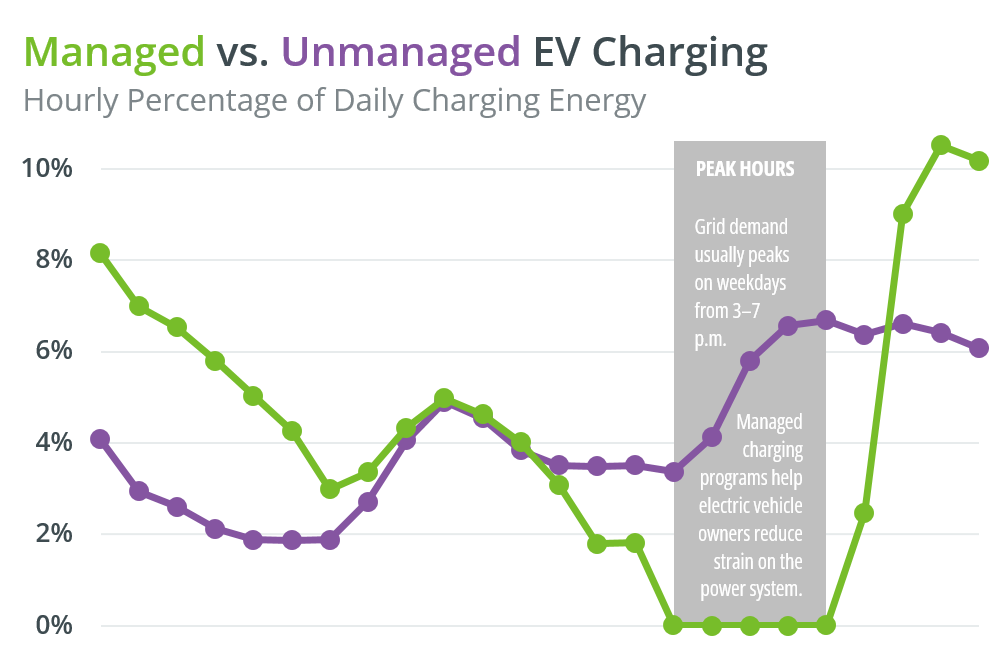CELT 2024: ‘Managed charging’ profiles added to EV forecast

For the first time, ISO New England’s 10-year energy load forecast accounts for programs that encourage electric vehicle (EV) owners to avoid charging during times of greatest electricity use.
EVs represent the single largest contributor to the growth in energy consumption predicted in ISO New England’s 2024–2033 Forecast Report of Capacity, Energy, Loads, and Transmission (CELT Report)—a key planning document that aims to size up the region’s energy landscape for the next 10 years.
Today, personal light-duty EVs make up only about 2% of all vehicles in New England, and EV adoption has generally been slower than previously expected. Even so, based on state decarbonization mandates and the likely pace of EV adoption required to support them, the ISO anticipates EVs to comprise 26% of the region’s personal vehicle population by 2033—representing about 3 million automobiles. At a smaller scale, growing numbers of light-duty fleet vehicles, medium-duty delivery vehicles, and school and transit buses are expected to go electric as well in the next decade.
The ISO’s Transportation Electrification Forecast predicts annual power consumption from all types of EVs will total about 325 gigawatt-hours (GWh) in 2024, increasing dramatically to 15,182 GWh in 2033. By the end of the forecast period, EVs are expected to contribute about 2,300 megawatts (MW), or 9%, to summer peak demand and about 3,300 MW, or 13%, to winter peak demand. EVs use more energy in winter due to decreased battery efficiency and the need for cabin heating.

Most EV charging occurs in the early evening, as many EV owners return home from work. This coincides with the time of highest demand on the power grid. In the chart above, the purple line represents typical “unmanaged” EV charging patterns on weekdays in July.
The green line represents the blended charging profile of “managed charging” program participants. Managed charging programs offer various incentives for owners to avoid charging their EVs during peak hours, shifting charging to times when electricity demand and wholesale prices tend to be lower, especially late-night hours. The amount of energy consumed remains unchanged.
ISO New England anticipates about 1% of EV owners will participate in managed charging programs in 2024, increasing to 10% by 2033, which will elicit a corresponding modest decrease in projected evening peaks.
Utilities currently offer managed charging programs in Connecticut, Massachusetts, New Hampshire, and Vermont. These programs are likely to evolve and expand as more drivers make the switch to EVs, prompting increased participation and a corresponding impact on peak demand in the coming years.
Learn more about the 2024 CELT Report
- Categories
- Publications
- Tags
- CELT, electrification
